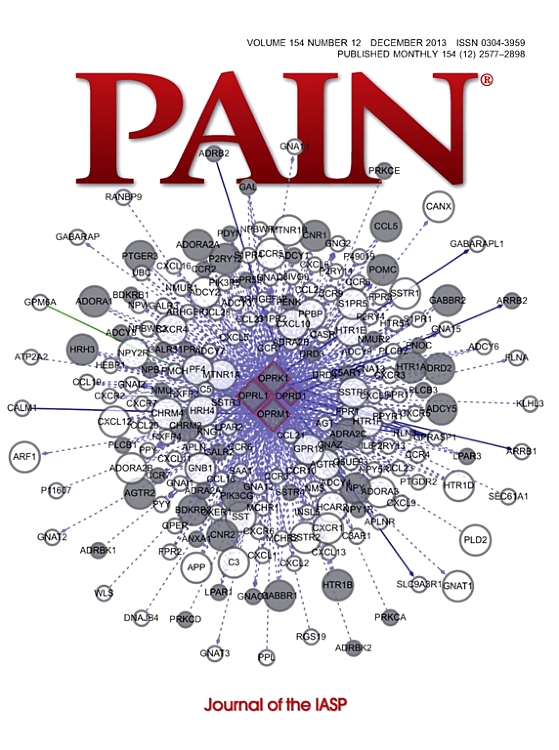外周对抵消性镇痛的贡献:刺激持续时间、强度和位置的影响。
IF 5.9
1区 医学
Q1 ANESTHESIOLOGY
引用次数: 0
摘要
补偿性镇痛(OA)是在有害刺激强度轻微减少后疼痛感知的实质性减少。外周机械和热敏感的a纤维伤害感受器(AMH-I和AMH-II)和c纤维伤害感受器(CMH)被认为与OA有关。这些伤害感受器在初始反应潜伏期、峰值反应潜伏期和热阈值上有所不同,手掌中可能没有AMH-II纤维。针对这些不同的伤害性特性的刺激被用来确定哪些伤害感受器对OA起关键作用。健康志愿者(N = 64)进行了16次持续毒热(45-47°C)的独特试验。这些试验包括3秒(短)或12秒(长)的有毒热量增加(46-48°C),或0.2秒的强烈热脉冲(51°C)。刺激被传递到背(背部)和手掌。在长时间的试验中,在手背和手掌上观察到显著的OA效应。偏移性镇痛不一致存在,短时间试验和脉冲试验的偏移性镇痛更小。与背部刺激相比,手掌刺激时疼痛等级的增加通常更慢。手掌上OA的证明表明AMH-II伤害感受器对OA不重要,或者AMH-II伤害感受器存在于手掌中。在短时间试验中,强脉冲后的OA较小,OA大幅减少,这表明OA不是必需的AMH-I伤害感受器,AMH-II或CMH伤害感受器的更快反应不足以产生OA。本文章由计算机程序翻译,如有差异,请以英文原文为准。
Peripheral contributions to offset analgesia: effects of stimulus duration, intensity, and location.
Offset analgesia (OA) is a substantial decrease in pain perception after a minor reduction in noxious stimulus intensity. The peripheral mechano- and heat-sensitive A-fibre nociceptors (AMH-I and AMH-II) and the C-fibre nociceptors (CMH) are hypothesised to contribute to OA. These nociceptors differ in initial response latency, peak response latency, and heat threshold, and the AMH-II fibres may be absent from the palm. Stimuli targeting those different nociceptive properties were used to decide which nociceptors critically contribute to OA. Healthy volunteers (N = 64) underwent 16 unique trials with continuous noxious heat (45-47°C). These trials included 3-second (short) or 12-second (long) periods of increased noxious heat (46-48°C), or an intense 0.2 seconds pulse of heat (51°C). Stimuli were delivered to the dorsum (back) and palm of the hands. Notable OA effects were observed for long-duration trials on both the dorsum and palm of the hand. Offset analgesia was inconsistently present and much smaller for the short-duration trials and for the pulse trials. Pain ratings generally increased more slowly during palm stimulation compared with dorsum stimulation. The demonstration of OA on the palm suggests that AMH-II nociceptors are either not critical for OA or that the AMH-II nociceptors are present in the palm. The small OA after the intense pulse and the substantial reduction in OA during the short trials suggests that AMH-I nociceptors are not necessary for OA and that the faster response of the AMH-II or CMH nociceptors is not sufficient to generate OA.
求助全文
通过发布文献求助,成功后即可免费获取论文全文。
去求助
来源期刊

PAIN®
医学-临床神经学
CiteScore
12.50
自引率
8.10%
发文量
242
审稿时长
9 months
期刊介绍:
PAIN® is the official publication of the International Association for the Study of Pain and publishes original research on the nature,mechanisms and treatment of pain.PAIN® provides a forum for the dissemination of research in the basic and clinical sciences of multidisciplinary interest.
 求助内容:
求助内容: 应助结果提醒方式:
应助结果提醒方式:


